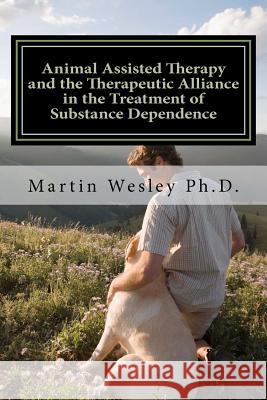Animal Assisted Therapy and the Therapeutic Alliance in the Treatment of Substance Dependence: Using Animal Assisted Therapy with Drug Abuse Treatment » książka
Animal Assisted Therapy and the Therapeutic Alliance in the Treatment of Substance Dependence: Using Animal Assisted Therapy with Drug Abuse Treatment
ISBN-13: 9781475043204 / Angielski / Miękka / 2012 / 186 str.
Animal Assisted Therapy and the Therapeutic Alliance in the Treatment of Substance Dependence: Using Animal Assisted Therapy with Drug Abuse Treatment
ISBN-13: 9781475043204 / Angielski / Miękka / 2012 / 186 str.
(netto: 43,43 VAT: 5%)
Najniższa cena z 30 dni: 42,84 zł
ok. 13-18 dni roboczych.
Darmowa dostawa!
This research study evaluated the effect of animal assisted therapy (AAT) on the therapeutic alliance with an adult residential substance abuse population in group therapy. The question of whether a trained therapy animal can enhance the therapeutic alliance was recently posed by Fine and Mio (2006). In their call for additional research, they suggested that "the gold standard for research of this type is to have a random assignment to an AAT format and a traditional therapy format and then to determine which format led to a better therapeutic outcome" (Fine & Mio, p. 517). This quantitative study followed these recommendations by using randomized populations and controlled conditions to establish the effects of chosen variables that influence outcome. The study made comparisons of the mean differences between groups with and without the therapy dog. A one-way analysis of variance (ANOVA) was used to compute the mean differences and test the hypothesis for the efficacy of AAT. The results of the study indicate that the therapeutic alliance is enhanced with the addition of a therapy dog. The addition of a therapy dog also lowered heart and diastolic blood pressure rates. Population subgroups were assessed with mixed results. Clients seeking treatment for a dual diagnosis, clients with state social service involvement, and clients seeking treatment for alcohol did not verify the efficacy for AAT. Males; females; pet owners; court ordered clients; and clients seeking treatment for polysubstance, cannabis, and methamphetamine dependence all supported the hypothesis, verifying the efficacy for AAT. The implications for social change for the verified hypothesis are profound. First, addiction professionals can increase treatment success by adding this complementary evidence-based practice. Secondly, for those already using AAT in treatment, social change will transpire by verifying empirically what practitioners already suspected anecdotally; specifically, that therapy animals enhance treatment outcome.











